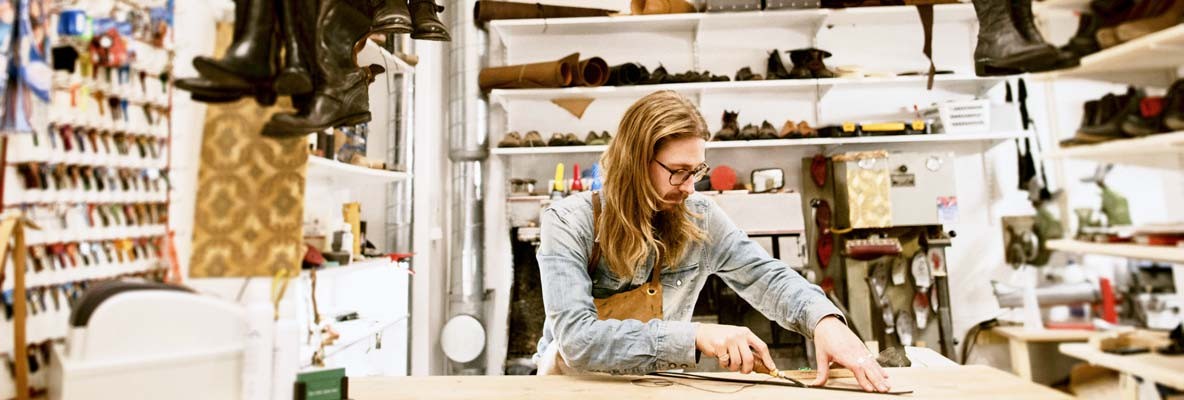We use cookies to enhance your experience. Basic cookies are essential for the proper working of this website. For example, they save your language preferences. They also help us gather anonymous information about the use of our site. More information in our Cookie Policy.
Lease@ING: easy financing, smart REfinancing!
Of all the types of leasing available in Luxembourg, financial leasing could be considered the most suitable for companies seeking to optimise their investments, from the self-employed to companies in the financial sector, including traders, craftsmen, the liberal professions, SMEs and SMIs. It is an interesting alternative to traditional credit, allows the renewal of equipment for professional use and improves the presentation of the balance sheet. But how does financial leasing work and how can it help your company to expand on a daily basis?
We take a closer look at a developing product with Riana Poupin, Managing Director of ING Lease, which has helped 3.300 customers for over 30 years.
Leasing is good for financing company cars...
That is a very simplistic view, because there are several forms of leasing. The leasing you are thinking of is what is called operational leasing. It is mainly used to finance fleets of company vehicles and also includes insurance, maintenance, etc. At ING Lease, we do financial leasing. This type of leasing is not limited to vehicles, but is used to finance any tangible asset, material or equipment involved in the company’s economic activity. For example, the objects financed range from excavators to machine tools, from computer equipment to office furniture... We primarily provide companies with a working tool.
Over time and in view of the current climate challenges, we have also adapted our offer to support our customers in the energy transition: for example, we finance photovoltaic panels and low-carbon or even zero-carbon rolling stock such as railway carriages and hybrid or electric buses and cars.
Howdoes financial leasing work?
To summarise as much as possible, let’s imagine that you need equipment. Rather than purchasing it, you can ask ING Lease to buy it and ING will lease it to you. You use the equipment but ING Lease is the owner. From the beginning the contract defines the monthly lease payments and the purchase option (also called residual value). This is linked to the value at maturity of the equipment. At the end of the contract, you can choose between three alternatives. You buy the equipment for the residual value originally agreed. You do not exercise the purchase option and return the equipment to the lessor, who remains the owner. You extend the contract, which consists of a refinancing of the residual value.
Why lease? Why not buy on credit?
Leasing can bring many advantages, both financial and accounting. Indeed, the leasing term is often shorter than the amortization period in own funds or conventional credit. Moreover, in Luxembourg accounting, leasing is considered as an off-balance sheet operation. The company’s debt ratios are therefore not impacted.
Generally speaking, this product enables the company to keep its cash and any lines of credit for other needs. Leasing involves 100% financing, so there is no initial contribution from the user. You can buy out the contract early at any time or choose nonlinear lease payments based on your cash flow, which gives your business a great deal of flexibility. Another important advantage of financial leasing is its tax impact. You can reclaim the VAT calculated on the lease payments and fully deduct the lease payments as operating expenses from your taxable profit.
Doesleasing only apply to new equipment?
No, it is possible to refinance equipment that has already been acquired by a company that is seeking to regain cash or that, for various reasons (opportunity, supplier relationship, etc.), has wished to acquire the equipment itself. Here is an example of what is known as a Sale & Leaseback: company X has an overdraft of EUR 500,000. Although the company is healthy, it has a rapid need to free up cash (longer payment terms for its customers, urgent intangible investments, etc.). The CEO therefore decides to turn to his bank to increase his line of credit. Given the size of the entity and the urgency of the request, the bank considers that an increase in this credit is not the appropriate response. To support its client, it offers a Sale & Leaseback on recent equipment acquisitions. In concrete terms, ING Lease leases to company X equipment that the latter already owns. ING Lease buys back this equipment from company X, thus providing it with a cash flow boost. Company X will regain ownership of the equipment at the end of the lease by exercising the purchase option. Leasing is therefore a simple and interesting alternative to traditional financing, whether for new investments or refinancing. It supports the company as it moves from an ownership economy to an economy of use.
To learn more about our leasing solutions, see our dedicated page.
11/2023
Society is transitioning to a low-carbon economy. So are our clients, and so is ING. We finance a lot of sustainable activities, but we still finance more that’s not. See how we’re progressing on ing.com/climate.
